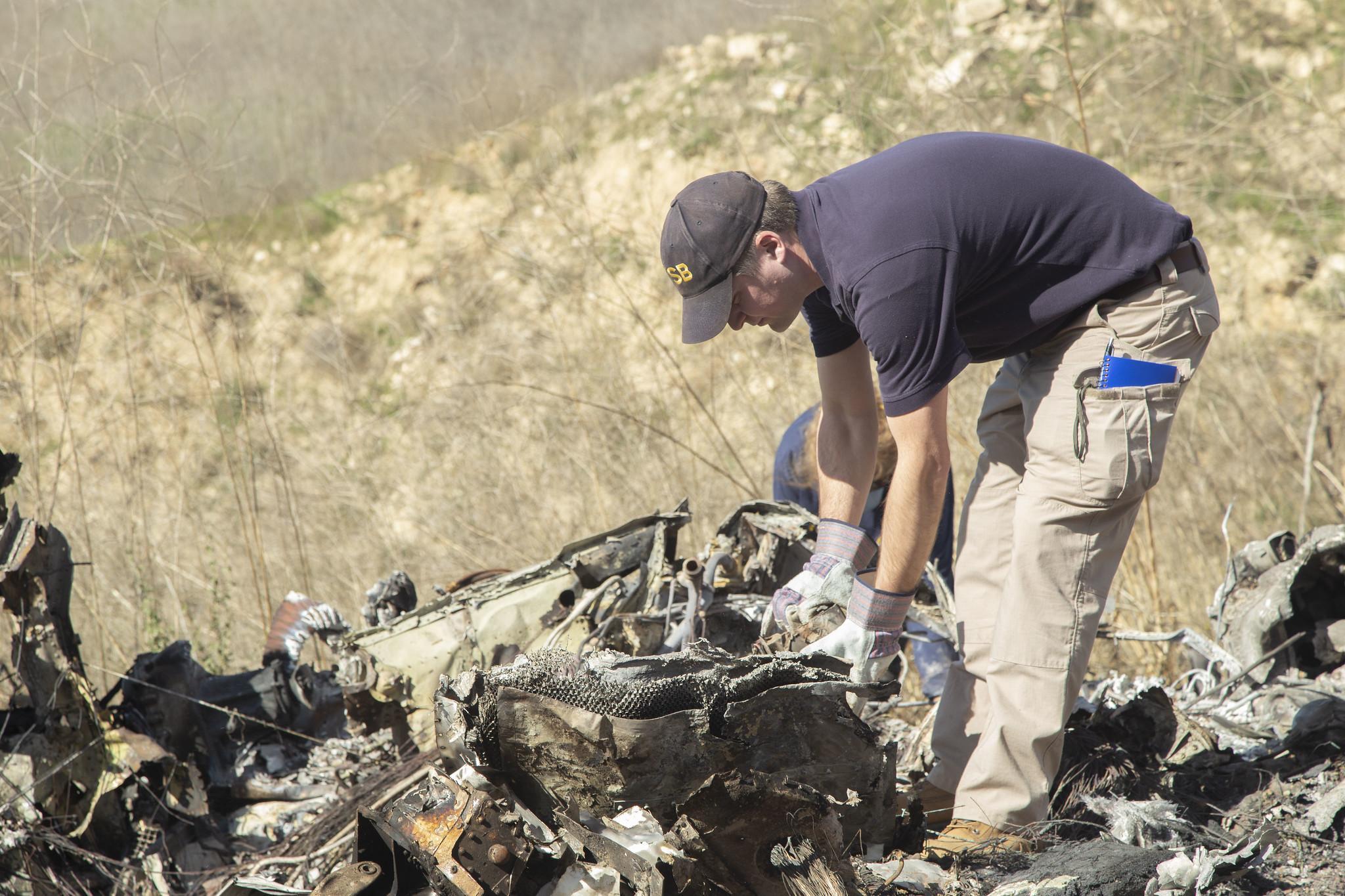
Before the five members of the NTSB approve a final accident report, they meet in public to hear the facts and circumstances of the case from the investigative staff and to deliberate the facts, analysis, findings, probable cause and recommendations.
Safety Board members ask questions and offer comments that may not be reflected in the final report. Often the questions also exist in the minds of observers and members of the aviation industry, and the back-and-forth discussion with the staff can add interesting flavor to an otherwise straightforward accident report. I offer here a summary of some of those discussions.
Board Vice Chairman Bruce Landsberg asked if the helicopter had a functioning autopilot and if it could have been engaged when the helicopter entered IMC, and if the pilot could have returned to Van Nuys, only 10-12 mi. behind them. The answer to both questions was yes.
Member Jennifer Homendy asked if a Terrain Awareness System (TAWS) would have been helpful. Investigator-in-charge Bill English explained that while TAWS is great technology, it is designed to prevent controlled flight into terrain (CFIT), not loss of control inflight (LOC-I).
Member Michael Graham asked if the pilot followed his training when he encountered the loss of visibility. The answer was no.
Member Thomas Chapman observed that there were 184 accidents involving spatial disorientation from 2010-19, and 20 of them were fatal helicopter accidents. Chairman Robert Sumwalt made the point that the flight could have been flown under IFR, and that passenger charter helicopter flights probably should be flown routinely under IFR. He also pointed out that both the previous operator of the S-76 and Chevron Oil had required the use of two pilots.
The NTSB members raised other questions. One was why Island Express Helicopters had no alternative plan to get the passengers to their destination via ground transportation if the flight had to land. There was none. Another question pertained to the actual instrument experience of the pilot, which was very low considering his total flight time. Even the small amount of instrument time he had logged was mostly under a vision restricting device, not in actual IMC. A third question was related to what steps the FAA was taking to mandate SMS to Part 135 operators. The answer was that SMS for those operators is a long-term goal and no notice of proposed rulemaking (NPRM) is in the works.
Homendy pointed out that when she filled out the risk assessment form, it generated a score of 37 under a worst-case scenario, leading to the idea that the form was ineffective. Graham said he was “not a big fan” of such numbered forms. Several members commented on the importance of flight data monitoring (FDM) equipment and analysis programs to identify deviations and trends in a non-punitive way so that mitigations can be devised.
Finally, Sumwalt commented that “even good pilots can end up in bad situations.” What he called “SLOJ”--sudden loss of judgment--justifies more redundancy in systems to trap errors, including use of autopilots and having two pilots.
Probable Cause
The NTSB determined that the probable cause of the accident was “the pilot’s decision to continue flight under visual flight rules into instrument meteorological conditions, which resulted in the pilot’s spatial disorientation and loss of control. Contributing to the accident was the pilot’s likely self-induced pressure and the pilot’s plan continuation bias, which adversely affected his decision-making, and Island Express Helicopters’ inadequate review and oversight of its safety management processes.”
The Safety Board offered recommendations to the FAA on using simulation devices to train helicopter pilots for spatial disorientation and changing weather conditions, and to Island Express on installing FDM and participating in the FAA SMS program.
Final Thoughts
FDM programs within an SMS are intended to identify risky actions, and they are good at that. Island Express Helicopters will probably comply with the NTSB recommendation to install one. However, short of a camera in the cockpit, I don’t know how you would know from an FDM program when a helicopter is flying in IMC. Safety tools have to be tailored to the actual operation.
There are hints and suggestions in the report that make me think the accident pilot was more of a risk-taker than he appeared. Several pilots who knew him said he was known to take risks. One repeated a story about him descending below clouds over the water. He had a Class B airspace violation. He chose to fly on Jan. 25 and 26 even though the company had 13 cancellations for weather on Jan. 24 and 25. There was no direct evidence that he had penetrated IMC conditions previously, but that doesn’t mean he hadn’t done it. Disclosure on his part could have led to career consequences. Another pilot was downgraded for landing to refuel, and that may have sent a message to other pilots that mistakes were not tolerated. Finally, from the tops report he asked for, he knew the cloud layer was shallow and he could guess from radio calls that there was probably no nearby traffic. I think it is reasonable to conclude his decision to climb into the clouds without an IFR clearance was deliberate and possibly even pre-planned.
The fact that the chief pilot did not follow the safety precepts that he was responsible for teaching tells me that Island Express did not have real a buy-in to safety programs from its pilots. Even though the company had probably spent a lot of money on training and an SMS program, such programs are regarded by the pilots as just bureaucratic overhead until the participants really accept it. Getting that acceptance may be the hardest part of putting in an SMS.
Editor's Note: This is the third part of a three-part series. Here is part one and part two.





